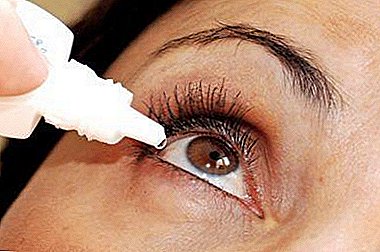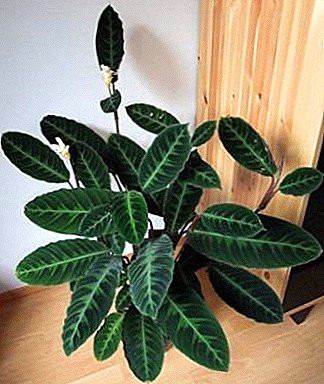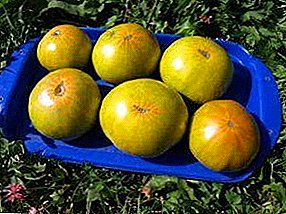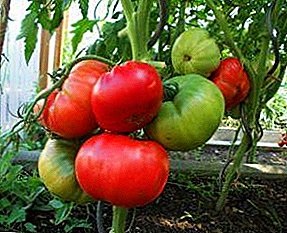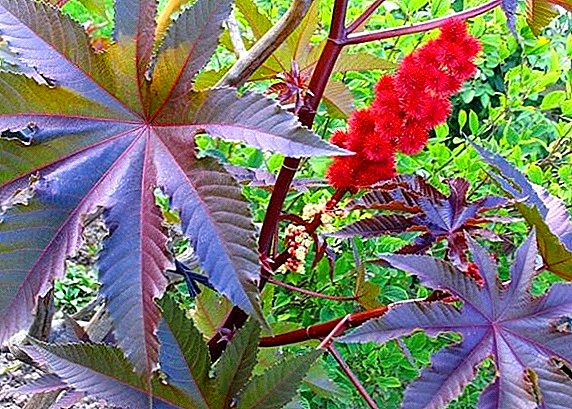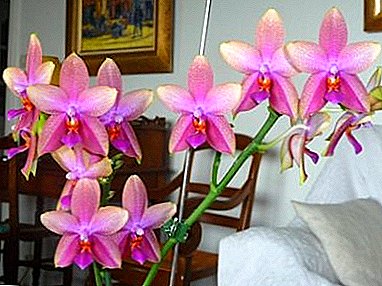
Orchids are gaining increasing popularity. They are always in demand by florists. The flower is very beautiful and fragrant. Among the diverse palette of varieties of phalaenopsis, its unusual nature is such a look as Liodoro.
About its features, differences about other orchids, growing conditions and care, and will be discussed further. You can also watch a useful video on this topic.
Definition
Phalaenopsis Liodoro is a hybrid that was obtained by crossing several types: Phalaenopsis Deventeriana and Phalaenopsis violacea. This hybrid very quickly gained popularity among gardeners due to its unusual flowers and the smell emitted by them.
Brief botanical description
The leaves are slightly wavy light green. They can be oval or elongated. In length reach 23-25 centimeters, and in width to 12 centimeters. The foliage is rather soft and tender. Therefore, it is necessary to carefully handle the flower, especially during growth.
Phalaenopsis flower stalks hanging down do not exceed 50 centimeters. Buds are opened in groups of five. After one phase of flowering is completed, new buds will appear on the shoot.. Sepals and petals are wide and oval.
The flowers are large, star-shaped and reach 7 centimeters in diameter. From them comes a light scent that resembles lily of the valley or lime. Color is different: pink, purple, yellow.
There are flowers with small red splashes on the petals.. Their brightness depends on the conditions in which phalaenopsis lyodoro grows.
A photo
Below you can find a photo of Phalaenopsis Liodoro.



History of
This hybrid was officially registered in 1982 by the American firm "Orchid Universal" under the name Phalaenopsis Sweet Memory. In the 90s, the name had a synonym - Phalaenopsis Liodoro. Since then, the plant and sold under this name in flower shops.
What is the difference from other orchids?
The main feature of the hybrid is its pleasant sweet smell.. Some flowers smell only in the mornings, others in the evening, and there are also those that emit a wonderful smell all day. Another distinctive feature are flower stalks, which are in a wilted position. Other orchid varieties have erect peduncle.
Subsort
Phalaenopsis variety includes about 70 sub-varieties. Most of the subspecies are characterized by a broad foliage of rich green color, but there are flowers that have beautiful patterns that resemble marble. Phalaenopsis has many different shades. The most popular are white, yellow, orange, light and bright pink orchids.
The main subsorts: Phalaenopsis Stewart, Schiller, pink, butterfly, Phalaenopsis royal, Golden, Philadelphia, peloric, multiflora, liodoro.
Bloom
When and how?
Lyodoro has one of the longest blooms. This is due to the fact that the buds of the plant do not all bloom at once. Until the first flowers completely bloom, the following buds will not open. The flowering period can occur at any time of the year, both in spring and in autumn and even in winter, it all depends on the conditions created.
Features care before and after
Before starting phalaenopsis, it is necessary to carefully monitor the temperature, it should not be below + 25 ... +27 degrees during the daytime, and at night, fluctuation in the area of + 22 ... +24 degrees is permissible. The orchid is positive for light, so it will need as much as possible.
Board: After the first buds wither, it is recommended to take the plant to a cool place, as this will contribute to new flowering. After a few months, the plant can be returned to its previous location. Watering is reduced.
What if it doesn't happen?
 First you need to understand the reasons for which flowering may not occur. Main reasons: wrong room temperature. Day and night temperatures should differ from each other, at least 7-8 degrees. To provide a flower with this condition, you need to put the pot in a colder place for the night. Phalaenopsis Lyodoro does not tolerate hitting the direct rays of the sun and their lack.
First you need to understand the reasons for which flowering may not occur. Main reasons: wrong room temperature. Day and night temperatures should differ from each other, at least 7-8 degrees. To provide a flower with this condition, you need to put the pot in a colder place for the night. Phalaenopsis Lyodoro does not tolerate hitting the direct rays of the sun and their lack.
The flower grower who owns the plant will have to look for a balance. Watering should not be abundant, but cold water. If the orchid has recently been transplanted, it will require a recovery period, which can last about six months.
How to call?
To induce lyodoro bloom there are 2 ways. You can use only one of them:
- The easiest way is to provide optimal conditions for the orchid. This procedure will only cause flowering in healthy Liodoro.
- Need to dramatically change the climate. Make a chemical dressing or spray solutions.
Step-by-step care instructions
- Choosing a place. Since the birthplace of this plant is the tropics, it will need a lot of light. The ideal place is the window sill, whose windows face south. In rare cases, you can put on the east or west side.
- Soil preparation and pot. The florist should always monitor the condition of the roots, so a clear and smooth pot is needed. Soil mixture should not be done independently by novice gardeners, it is better to buy ready-made soil in a special store. To prepare the substrate at home you will need:
- moss;
- coarse sand;
- pieces of bark;
- perlite;
- cork crumb.
- Temperature. As mentioned above, any orchid requires a temperature drop. In order for a flower to feel well, it must fluctuate around + 15 ... +28 degrees. This interval should be followed.
- Humidity. Increased moisture - the key to a healthy plant. This factor is very important for the orchid, so from time to time you need to spray Phalaenopsis Liodoro. To raise moisture, you can put a container filled with water next to the pot.
- Lighting. It needs a lot of ambient light. Light day should be at least 13 hours. In summer, the flower pritenyaetsya, and with the approach of autumn, on the contrary, you need to increase the illumination.
 Watering. Hybrid loves wet soil, but do not overdo it. Soft water is suitable for watering. In the summer period, the procedure is carried out after drying 2-3 centimeters of the top layer of soil. In winter, when the light day is short, and the temperature is low, orchids can be planted to have a little dryness. Care must be taken after phalaenopsis has blossomed. You can water in two ways: by immersion or shower. In the first case 10 minutes will be enough for the plant to have time to feed, in the second it is necessary to let the water drain and only after that return the pot to its place.
Watering. Hybrid loves wet soil, but do not overdo it. Soft water is suitable for watering. In the summer period, the procedure is carried out after drying 2-3 centimeters of the top layer of soil. In winter, when the light day is short, and the temperature is low, orchids can be planted to have a little dryness. Care must be taken after phalaenopsis has blossomed. You can water in two ways: by immersion or shower. In the first case 10 minutes will be enough for the plant to have time to feed, in the second it is necessary to let the water drain and only after that return the pot to its place.- Top dressing. The flower needs fertilization only at the moment of active growth. Supplements are made once a week. It is forbidden to overdose and fertilize nutrient complexes that are not intended for this type. To completely do without dressing, it is worth every two years to change the ground.
- Transfer. In the first years after purchase, the orchid does not need to be transplanted, unless it grows in Sphagnum moss. After this procedure, the flower does not need anything, except for complete rest. Phalaenopsis independently adapts to the new conditions and develops immunity.
We recommend to watch the video about the care of Lyodoro orchid:
Breeding
Children
After the baby has been noticed, it is necessary to spray the plant very often and wait until the new appendix takes root. When the root system appears, it is carefully cut off and planted in a new container. The cut is processed with crushed coal.
Vegetative
To propagate in a vegetative way, you need to divide the roots into several parts, while leaving at least two bulbs on each part. Then spread out in separate pots. Care of cut roots is no different from the usual. In this case, you also should not forget about treating the roots with ashes or coal, for disinfection.
Diseases and pests
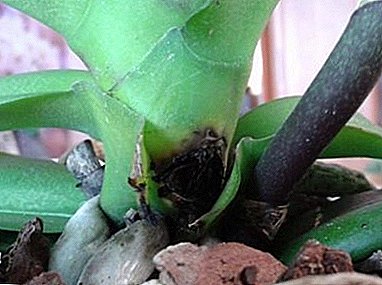 Rot. The orchid is subject to various types of rot: gray, black, brown, root. It is possible to overcome the disease by removing the damaged areas of the roots and treating with fungicidal agents.
Rot. The orchid is subject to various types of rot: gray, black, brown, root. It is possible to overcome the disease by removing the damaged areas of the roots and treating with fungicidal agents.- Redhead. If white and fluffy lumps were noticed, it means that the worm has struck the flower. It can be removed using a damp cloth and subsequent processing of "Fitoverm".
- Shchitovka. Bulb formation on sheets is a clear sign of this pest. You can destroy the enemy as follows: first, collect all visible insects, then treat with "Flyoverm" and at the end change the soil.
We recommend watching a video about pests and diseases of orchids:
Prevention of various problems
To protect the flower from ailments, you must follow the recommendations for the care of the culture, which are not so difficult. AND it is advisable not to have flowerpots with orchids next to each otherto prevent the transmission of diseases and pests from one flower to another.
Conclusion
There are many varieties of orchids that are very demanding to care. But Phalaenopsis Liodoro belongs to this type, which will not be difficult for a beginning gardener to grow.


 Watering. Hybrid loves wet soil, but do not overdo it. Soft water is suitable for watering. In the summer period, the procedure is carried out after drying 2-3 centimeters of the top layer of soil. In winter, when the light day is short, and the temperature is low, orchids can be planted to have a little dryness. Care must be taken after phalaenopsis has blossomed. You can water in two ways: by immersion or shower. In the first case 10 minutes will be enough for the plant to have time to feed, in the second it is necessary to let the water drain and only after that return the pot to its place.
Watering. Hybrid loves wet soil, but do not overdo it. Soft water is suitable for watering. In the summer period, the procedure is carried out after drying 2-3 centimeters of the top layer of soil. In winter, when the light day is short, and the temperature is low, orchids can be planted to have a little dryness. Care must be taken after phalaenopsis has blossomed. You can water in two ways: by immersion or shower. In the first case 10 minutes will be enough for the plant to have time to feed, in the second it is necessary to let the water drain and only after that return the pot to its place. Rot. The orchid is subject to various types of rot: gray, black, brown, root. It is possible to overcome the disease by removing the damaged areas of the roots and treating with fungicidal agents.
Rot. The orchid is subject to various types of rot: gray, black, brown, root. It is possible to overcome the disease by removing the damaged areas of the roots and treating with fungicidal agents.
